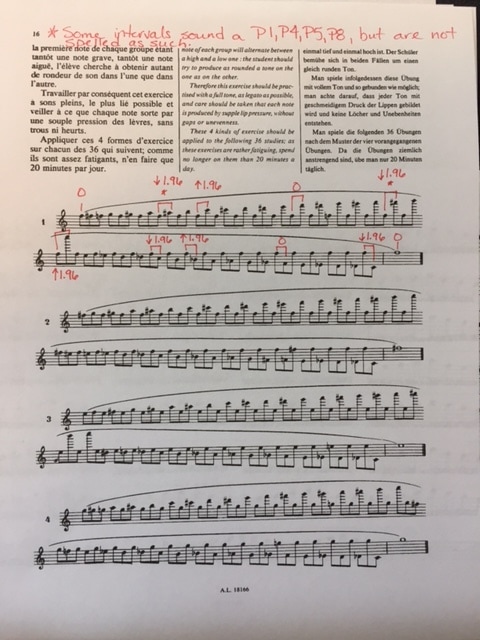 Tuning in equal temperament (the space between half steps is consistent) was the goal of the previous blog entry (tuning chart exercise), and once you’ve gained a good understanding of your instrument’s natural pitch tendencies, you can move on to this next step. When playing with other musicians, it’s important to know that even if you are in tune with the tuner, you are not necessarily in tune with others…even if they are in tune with their tuner! Learning the adjustments needed just intonation, when playing chords with others, is very important. By developing a keen sense for tuning, you will be able to adjust your pitch to help eliminate beats within chords. When approaching just intonation, I have my students begin with tuning unisons, octaves, perfect fourths and perfect fifths. These intervals need little to no adjustment between their equal temperament position and their just intonation position. For specific adjustments, see below. For both the equal temperament and just intonation portions of this exercise, I have students use the intervals exercise beginning on page 16 of Moyse’s De la Sonorite. There are other, more melodic, exercises I use following this introduction. To further your work on tuning in equal temperament, begin with using a tuner. You should aim to play each note in tune, learning how to adjust the air stream and lip pressure when both ascending and descending. Slight changes in the vowel shape on the inside of the mouth will help intonation and tone quality as well. As you ascend, fight the temptation to flatten the space on the inside of the mouth. Typically, flattening the inside space in the mouth will cause the sound to thin and the pitch to rise. As you descend, fight the opposite temptation to open the mouth too much, as the sound will become hollower and the pitch flatter. For just intonation—while listening to a drone, play the exercise slowly and pay special attention to the tuning while playing the P1, P8, P4 and P5. For other intervals, the focus on executing the leap between notes. In lessons, I play the role of the drone to help students work on blending, as the blend between two musicians can also affect the perception of intonation. Students use another drone, such as The Tuning C.D., while practicing this exercise at home. Again, the reason the P1, P4, P5 and P8 are great to start with is because of how little the notes need to be adjusted. When you are able to consistently playing these intervals in tune, begin working on intervals of a third and sixth. Perfect Unison: No adjustment is needed Perfect Octave: No adjustment is needed Perfect Fourth: Lower by ~2 cents Perfect Fifth: Raise by ~2 cents Minor Third: Raise by ~16 cents Major Third: Lower by ~ 14 cents Minor Sixth: Raise by ~14 cents Major Sixth: Lower by ~16 cents Here's a link to The Tuning C.D.
0 Comments
|
The Pitch PageConvincing flutists that good intonation is attainable... ArchivesCategories |
 RSS Feed
RSS Feed